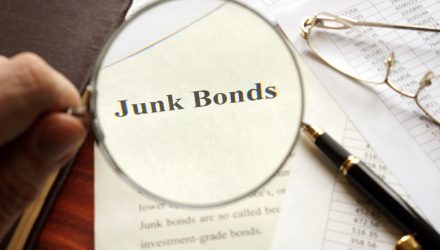Junk bonds and related exchange traded funds have dipped to their lowest level in two years this week as traders trimmed exposure to this risky fixed-income segment ahead of an anticipated hawkish Federal Reserve monetary policy outlook.
Year-to-date, the iShares iBoxx $ High Yield Corp Bond ETF (NYSEArca: HYG) declined 9.1% and the SPDR Bloomberg Barclays High Yield Bond ETF (JNK) decreased 9.5%, dipping to its lowest levels since April 2020 on Monday.
Additionally, the two high-yield bond ETFs were among the most hated ETF plays of 2022, with HYG experiencing $7.2 billion in net outflows and JNK seeing $2.8 billion in redemptions, according to ETFdb data.
Meanwhile, the yield spread on the ICE BofA U.S. High Yield Index, a commonly used benchmark for the junk bond market, widened to 405 basis points on Monday, compared to 393 bps last week. Its greatest disparity since March 15, when the spread touched a 15-month peak at 421 bps, Bloomberg reports.
The widening spread on junk bond yields over safe-haven U.S. Treasuries reflects the increased risk aversion in the current market environment.
Uncertainty has increased in recent weeks as markets grow weary of the Fed’s ability to properly manage a soft landing for a quickly expanding economy and elevated inflationary pressures.
Many anticipate Fed officials to announce a 50-basis point interest rate hike and quantitative tightening, or a reversal of its bond purchasing program, to combat the four-decade high inflation level.
Consequently, the tightening monetary policy outlook has weighed on the fixed-income market, especially on riskier assets like speculative-grade
“Continued Fed hawkishness — both an increasing embrace of 50bp moves and renewed focus on QT — have helped to push real and nominal yields to new highs,” Goldman Sachs says in a research note.
“This mix has ultimately led to pressure on equities and credit, exacerbated by worries about risks to growth,” the bank analysts add.
For more news, information, and strategy, visit the Fixed Income Channel.
